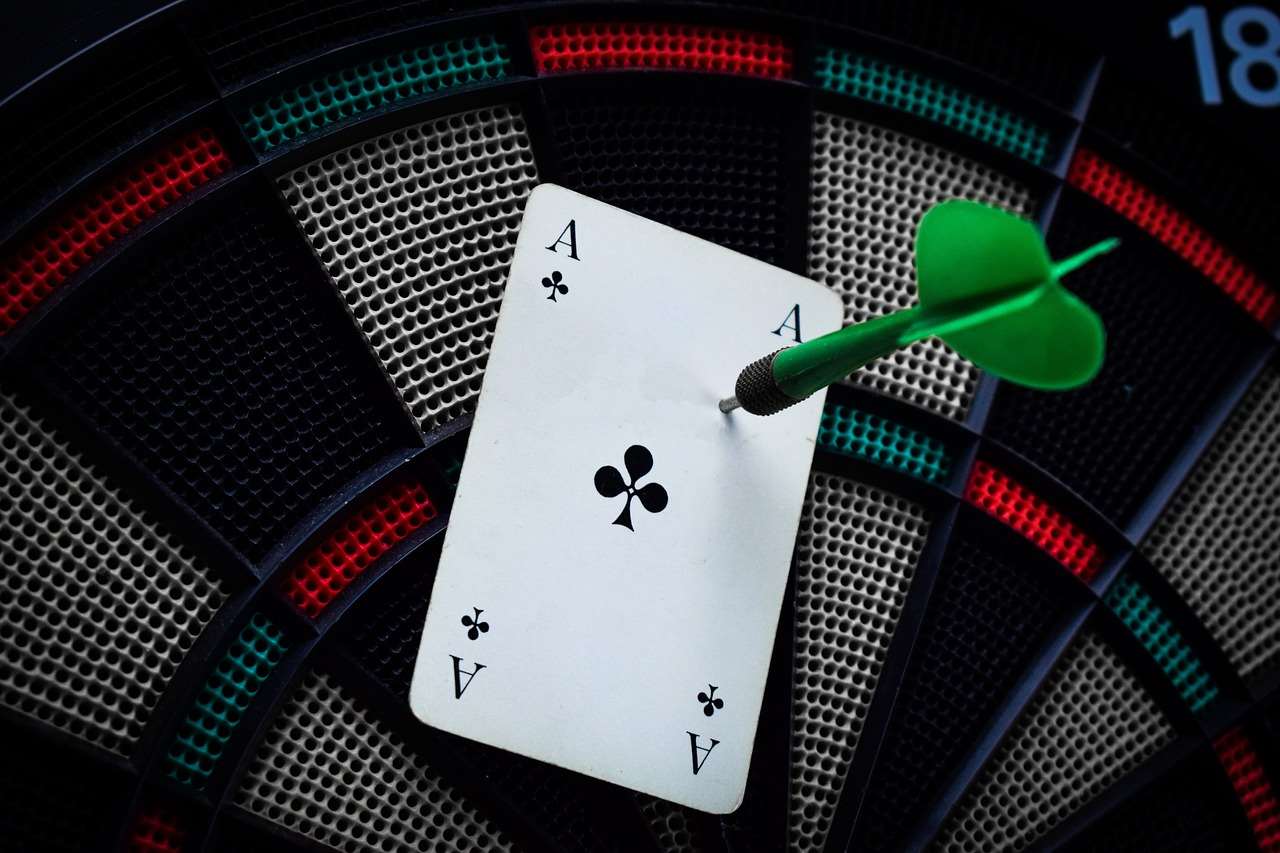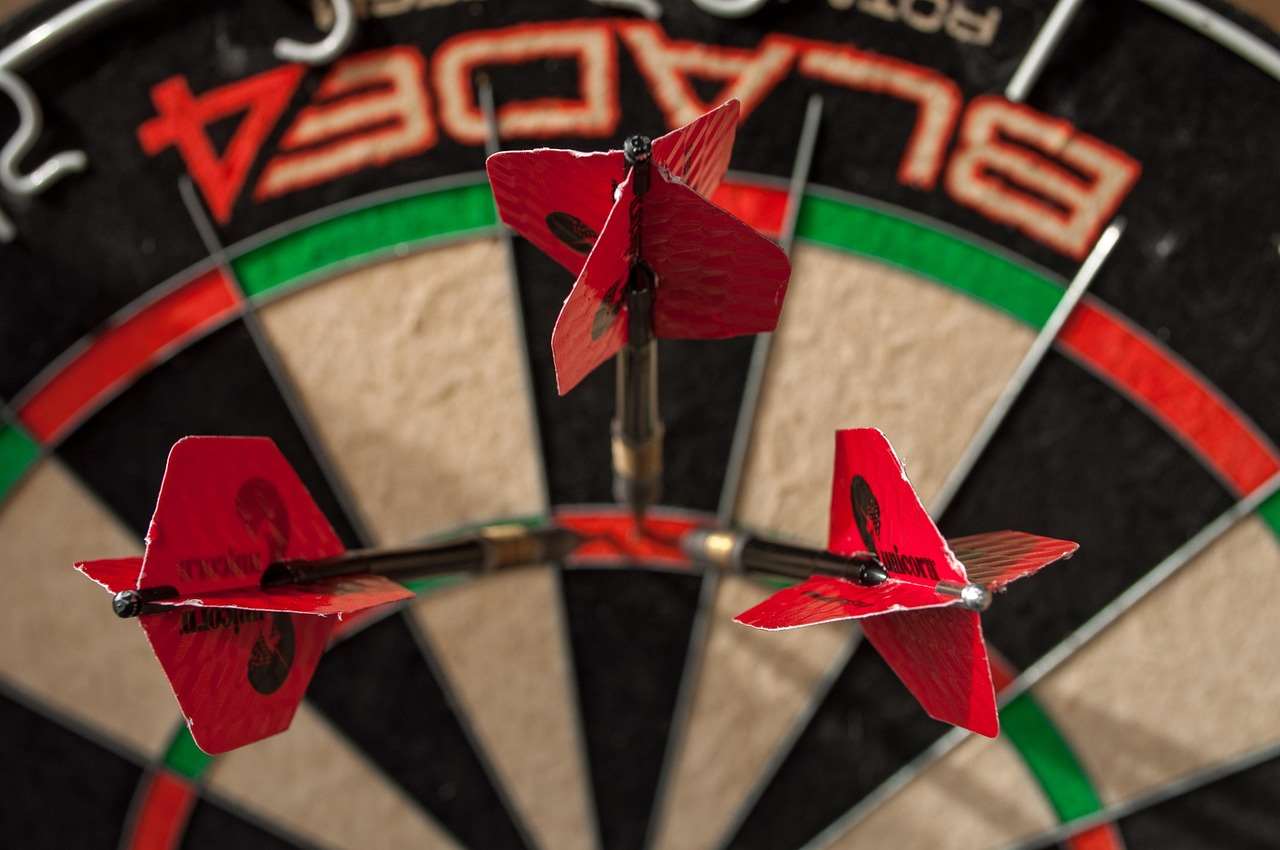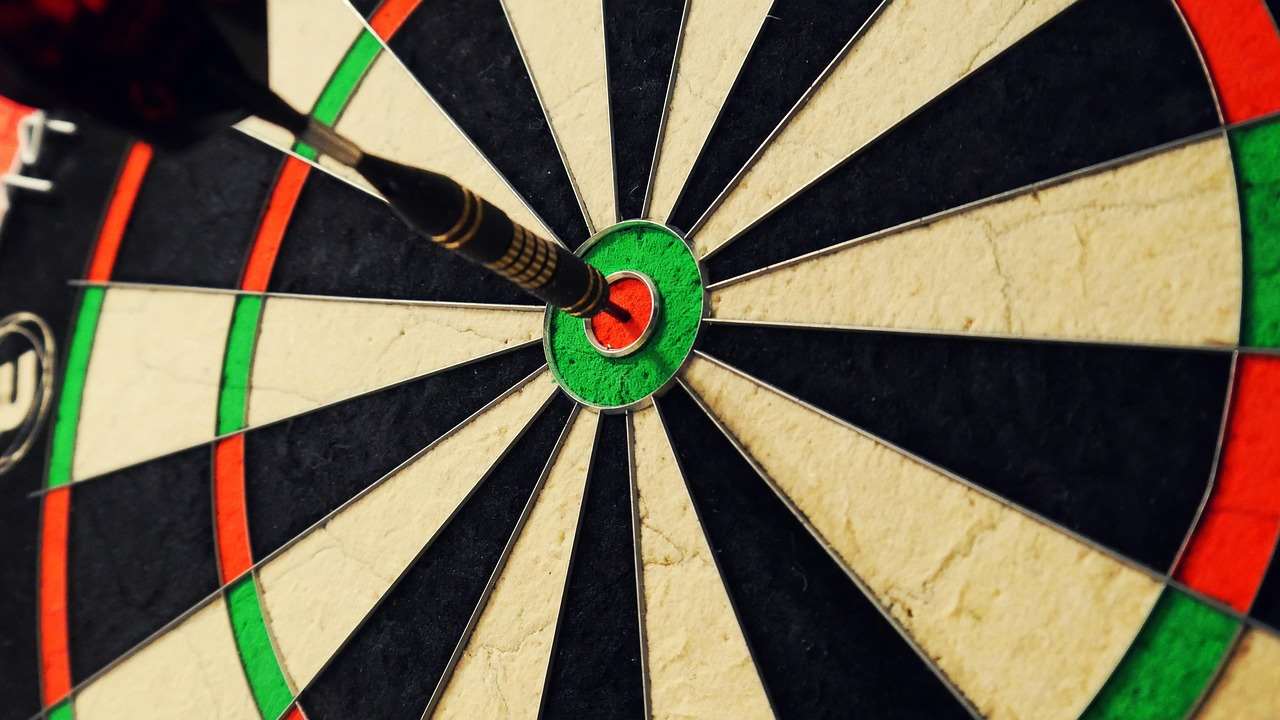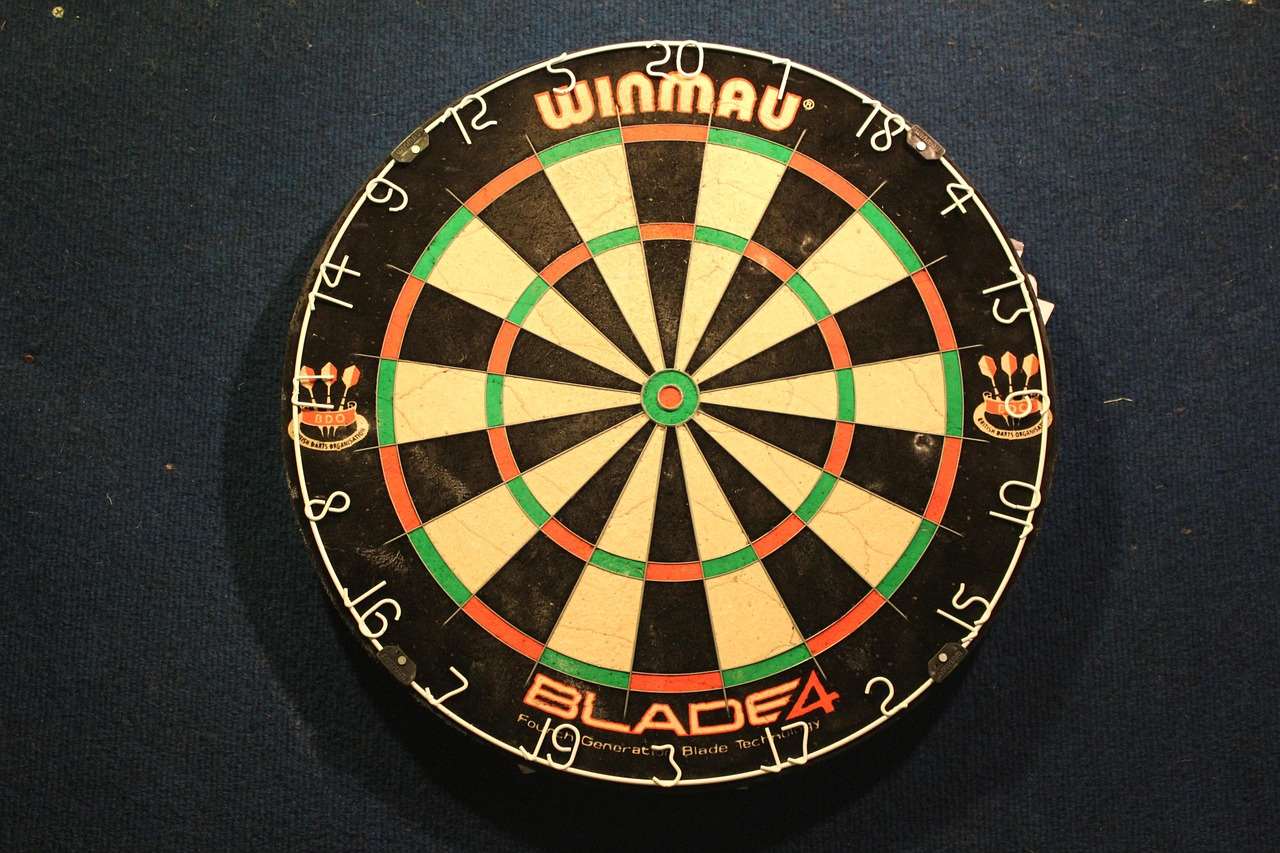Unlock the power of predictive analytics for your fantasy darts league by using **stat models for fantasy darts** to gain a competitive edge. This article explores how to leverage statistical insights to build winning teams, covering key metrics, model types, and practical application for dominating your league.
⚠️ Still Using Pen & Paper (or a Chalkboard)?! ⚠️
Step into the future! The Dart Counter App handles all the scoring, suggests checkouts, and tracks your stats automatically. It's easier than you think!
Try the Smart Dart Counter App FREE!Ready for an upgrade? Click above!
Understanding the Power of Stat Models For Fantasy Darts
In the world of fantasy sports, data reigns supreme. Applying statistical models to fantasy darts allows you to move beyond gut feelings and build your team based on concrete analysis. Instead of simply picking players with big names, you can identify undervalued gems and make strategic decisions that dramatically improve your chances of winning.
Statistical models provide a framework for quantifying player performance and predicting future results. By analyzing various metrics, you can create projections for points scored, legs won, and overall tournament success. This information is invaluable when drafting players, making trades, and setting your weekly lineup.

Why Use Stat Models?
- Data-Driven Decisions: Eliminate guesswork and base your choices on objective data.
- Identify Undervalued Players: Discover hidden talent that others overlook.
- Improve Prediction Accuracy: Make more accurate forecasts of player performance.
- Gain a Competitive Advantage: Outsmart your opponents with superior analysis.
Key Statistics for Fantasy Darts
Building effective **stat models for fantasy darts** starts with identifying the most relevant statistics. Not all metrics are created equal, and some offer better insights into player performance than others. Here are some key statistics to consider:
- Average: A player’s overall average score per dart is a fundamental indicator of their skill level.
- Checkout Percentage: This measures a player’s ability to finish legs, which is crucial for winning matches.
- 180s per Leg: The number of maximum scores (180) a player hits per leg reflects their scoring power.
- First 9 Average: This indicates how well a player starts legs and sets themselves up for success.
- Legs Won Against the Throw (LWAT): This statistic measures a player’s ability to break their opponent’s throw, a sign of mental fortitude and clutch performance.
These metrics provide a well-rounded view of a player’s capabilities. Analyzing them in combination allows you to create a more accurate assessment of their fantasy potential.
Types of Stat Models for Fantasy Darts
Several types of statistical models can be used to analyze dart players and predict their performance. Here are a few common approaches:
- Simple Linear Regression: This model uses a single predictor variable (e.g., average) to predict a target variable (e.g., fantasy points). It’s a basic but useful starting point.
- Multiple Linear Regression: This model incorporates multiple predictor variables (e.g., average, checkout percentage, 180s per leg) to improve prediction accuracy.
- Weighted Averages: This involves assigning different weights to various statistics based on their perceived importance. For example, you might give more weight to checkout percentage than to average.
- Elo Ratings: Borrowed from chess, Elo ratings provide a dynamic measure of player skill based on head-to-head results. This can be helpful for predicting match outcomes.
- Machine Learning Models: Techniques like Random Forests and Support Vector Machines can be used to identify complex patterns in data and make highly accurate predictions, although they require more data and expertise.
The choice of model depends on the availability of data and your desired level of complexity. Start with simpler models and gradually explore more advanced techniques as you gain experience. Understanding Darts Betting And Fantasy Leagues Guide can give you an even better edge.

Building Your Own Stat Model
Creating your own **stat models for fantasy darts** can be a rewarding experience. Here’s a step-by-step guide:
- Collect Data: Gather historical data on player performance from reliable sources like dart databases and tournament websites. Ensure the data is clean and accurate.
- Choose Your Metrics: Select the key statistics that you believe are most predictive of fantasy success.
- Select a Model Type: Start with a simple model like linear regression or weighted averages.
- Train Your Model: Use historical data to train your model and determine the optimal parameters.
- Evaluate Your Model: Test your model’s accuracy using a separate set of data.
- Refine Your Model: Adjust your model based on the evaluation results. Iterate and improve over time.
Remember, model building is an iterative process. Don’t be afraid to experiment and refine your approach as you learn more.
Advanced Techniques and Considerations
Once you have a basic stat model in place, you can explore more advanced techniques to further improve its accuracy and predictive power:
- Adjusting for Opponent Strength: Account for the quality of opponents faced by each player. A win against a top-ranked player is more valuable than a win against a lower-ranked player.
- Regression to the Mean: Recognize that extreme performances are often followed by a regression towards a player’s average. Avoid overreacting to short-term fluctuations.
- Incorporating Injury Information: Factor in any injuries that may affect a player’s performance.
- Using Real-Time Data: Integrate live data from ongoing matches to update your projections in real-time.
- Bayesian Methods: Use Bayesian statistics to incorporate prior beliefs about player performance and update them based on new data.
These advanced techniques can significantly enhance the sophistication and accuracy of your **stat models for fantasy darts**.

The Importance of Context
While statistical models are powerful tools, it’s important to remember that they are not perfect. Context matters, and it’s crucial to consider factors that may not be captured by the data, like player motivation, mental state, and playing conditions. A statistical anomaly could impact your player choice so it’s important to be aware.
For example, a player may perform better in certain venues or against certain opponents. They may also be more motivated to win a particular tournament. Incorporating qualitative factors into your analysis can help you make more informed decisions.
Tools and Resources for Stat Modeling
Fortunately, there are many tools and resources available to help you build and implement your own **stat models for fantasy darts**:
- Spreadsheet Software: Programs like Microsoft Excel and Google Sheets are excellent for basic data analysis and model building.
- Statistical Software: Packages like R and Python offer more advanced statistical capabilities and are ideal for complex models.
- Online Dart Databases: Websites like DartConnect and DartsDatabase provide comprehensive data on player performance.
- Fantasy Darts Websites: Many fantasy darts websites offer their own statistical tools and resources.
Take advantage of these resources to streamline your analysis and improve the efficiency of your model building process.

Combining Stat Models with Expert Analysis
The most effective approach to fantasy darts is to combine statistical analysis with expert insights. Stat models provide a quantitative foundation for your decisions, while expert analysis offers qualitative context and perspectives. Reading up on Impact Betting Sponsorship Darts could influence your opinion.
Listen to dart commentators, read articles by dart analysts, and follow dart experts on social media. Use their insights to supplement your statistical analysis and make more well-rounded decisions. Also keep in mind Betting Company Logos Darts Boards when assessing popularity.
Practical Application: Drafting and Trading
The ultimate goal of building **stat models for fantasy darts** is to improve your drafting and trading strategies. Here are some practical tips:
- Draft Based on Value: Use your stat model to identify players who are undervalued relative to their projected performance.
- Target Players with Upside: Look for players who have the potential to exceed their current projections.
- Trade Strategically: Use your stat model to identify players who are overvalued or undervalued by other managers.
- Diversify Your Portfolio: Avoid relying too heavily on a few key players. Spread your risk across a diverse range of players.
- Be Patient: Don’t panic if your team struggles early in the season. Stick to your strategy and trust your analysis.

Adapting to Changes
The world of darts is dynamic, and player performance can change rapidly. To stay ahead of the curve, it’s essential to continuously update your **stat models for fantasy darts** and adapt to new information.
- Monitor Player Form: Track player performance in recent tournaments and adjust your projections accordingly.
- Stay Informed About Injuries: Be aware of any injuries that may affect player performance.
- Adjust to Rule Changes: If there are any changes to the rules of the game, update your model to reflect these changes.
By staying proactive and adaptable, you can ensure that your stat model remains accurate and effective.
Conclusion: Embrace the Power of Data
Using **stat models for fantasy darts** can dramatically improve your chances of success. By embracing the power of data, you can make more informed decisions, identify undervalued players, and gain a competitive edge in your league. Remember to start with a solid foundation, consider external factors, and continuously refine your approach. Start building your model today and dominate your fantasy darts season!
Hi, I’m Dieter, and I created Dartcounter (Dartcounterapp.com). My motivation wasn’t being a darts expert – quite the opposite! When I first started playing, I loved the game but found keeping accurate scores and tracking stats difficult and distracting.
I figured I couldn’t be the only one struggling with this. So, I decided to build a solution: an easy-to-use application that everyone, no matter their experience level, could use to manage scoring effortlessly.
My goal for Dartcounter was simple: let the app handle the numbers – the scoring, the averages, the stats, even checkout suggestions – so players could focus purely on their throw and enjoying the game. It began as a way to solve my own beginner’s problem, and I’m thrilled it has grown into a helpful tool for the wider darts community.